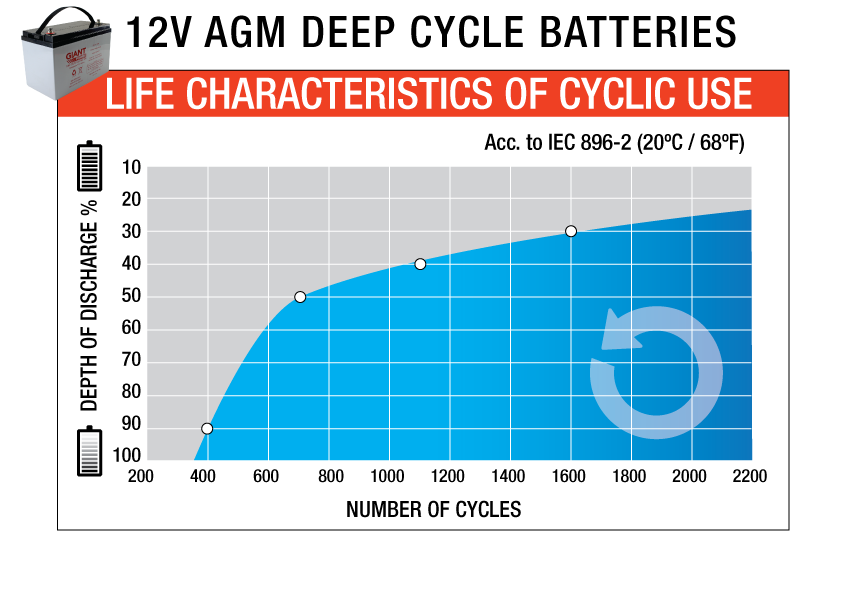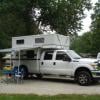Vic is right that battery voltage is only somewhat useful for determining State Of Charge (SOC) for a battery when it is being used, but is OK if you want a rough idea when you know nothing is running and the sun has set.
In this situation, I would ignore the 50% 'rule' (which is not a rule and is not even a good suggestion in many situations), and not be afraid to take your battery down to 80% - 90% Depth of Discharge (DOD).
Below is a typical cycle-life vs depth of discharge curve for a deep cycle AGM battery. Taking the battery down to 80% (or even further) would still yield ~300 - 500 cycles, which is a LOT of nights out for a weekend warrior. In our campers, weight is a big issue, so not carrying around twice the battery capacity, and only using half of it does not make much sense. It also sounds like you are already considering upgrading to LiFePO4 batteries, so getting 6+ years of service from your batteries is probably not your goal.
Based on a 80% DOD, you would want to limit your use below about 11.7 - 11.8V based on the chart Vic provided.

Source: https://offgridham.c.../agm-batteries/
Edited by rando, 23 January 2021 - 05:57 PM.


















